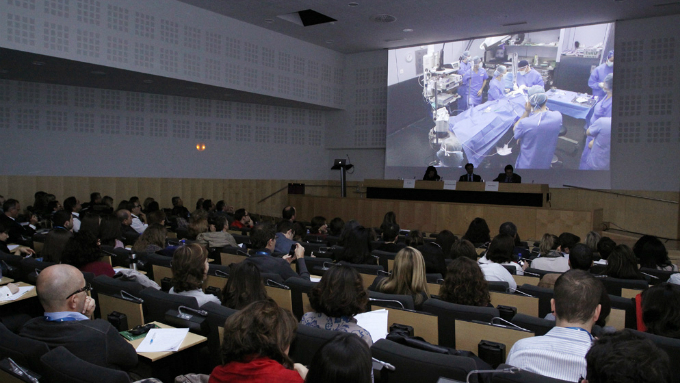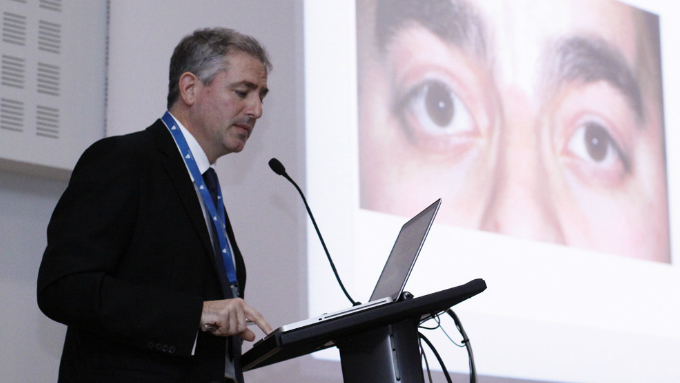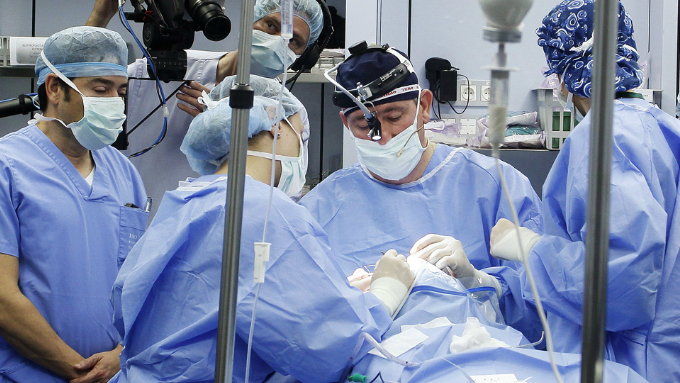Oculoplastics – dedicated to the diagnosis and treatment of injuries and diseases of the structures surrounding the eye (orbit, eyelids and tear ducts) – is a fast-growing ophthalmic subspeciality which is becoming increasingly popular among patients and constantly advancing. The fact that the area around the eyes is extremely delicate, coupled with the emergence and constant improvement of techniques, makes it essential for knowledge to be updated by highly qualified specialists. This is the aim of the second edition of the international course Barcelona Oculoplastics: Trends in Eyelid Surgery, which is organised by the IMO Foundation, and, on 17 and 18 April, will bring together more than 200 experts from around the world at IMO.
The event, which is predominantly practical in nature, will open with a live surgery session in which IMO’s operating theatres will be connected to its auditorium to show the specialist attendees the tricks of the trade and techniques used by renowned experts when dealing with complex cases, which can rarely be seen live.
It will also follow the evolution of patients who were operated on in the previous edition – held in 2012 – which showcased a cutting-edge technique performed by very few specialists in the world to correct lower eyelid retraction. It is known as the transconjunctival midface lift, or Madame Butterfly, and was introduced into Europe by Dr. Ramón Medel, an oculoplastics specialist at IMO and director of the course.
According to Dr Medel, “the transconjunctival midface lift involves lifting the cheekbone through the conjunctiva so that, without visible incisions, the lower eyelid can recover its normal position and the patient can achieve more natural and less traumatic results.” In this way, one of the main complications of blepharoplasty, which affects up to 20% of people who undergo this surgery to correct excess skin and bags of fat in the lower eyelids, can be solved.
Although it is one of the most requested cosmetic operations in Spain, “we should not forget that it is a difficult intervention and very specialised, requiring expert hands,” adds Dr Medel. This surgery will therefore be one of the themes that will focus the attention of specialists at Barcelona Oculoplastics, where different options and new techniques for providing patients with the best solutions will be addressed.
Similarly, another of the highlights of the course will be the issue of ptosis (drooping eyelids), which will be discussed by three leading world authorities in this field, Dr Richard Collin (UK), Dr Robert Kersten (USA) and Dr Ramon Medel himself. While the British ophthalmologist will address the issue of when to operate on children to ensure proper visual development and a successful outcome – the younger the age, the more complex the surgery – the American expert and IMO specialist will debate the pros and cons of the different procedures available.
In this regard, it is worth highlighting IMO’s pioneering direct frontalis flap technique, which involves connecting the muscle of the forehead with the eyelid, through a single incision without grafts. As explained by Dr Luz María Vásquez, also a coordinator of the course, “despite having a difficult learning curve, this technique provides very satisfactory results, both functionally and aesthetically.”
According to the organisers of the course, “aesthetics and eye health are two concepts that must always progress hand in hand, not only in the surgical field but also in terms of cosmetic oculoplastics, a field that is developing greatly and increasingly offering more alternatives for the rejuvenation of the middle and upper face.” This is certainly the case with carboxytherapy, which consists of injecting CO2 into the bags under the eyes to revitalise the area; collagen induction therapy to improve the colour, texture and brightness of the skin; and face tension wires, which in different areas and at different depths, can also contribute to improved quality.
All of these minimally-invasive treatments performed in the consulting room will also be addressed during the course, especially during a practical workshop to be offered by Dr Vásquez from the IMO’s Department of Oculofacial Aesthetics, and Dr Luigi Colangelo from Italy.
Likewise, the Puerto Rican specialist, José Raúl Montes, a leading authority in the field of injectable materials, will offer a second workshop in which he will demonstrate the latest trends in rejuvenation with fillers – mainly hyaluronic acid to restore volume loss – and botulinum toxin (Botox) for correcting expressive wrinkles. In both cases, they are extremely safe substances without side effects, and according to the specialists, “if well applied and in the right amounts, they enable certain features of the face to be highlighted or softened, thereby achieving the desired results for the patient.”


